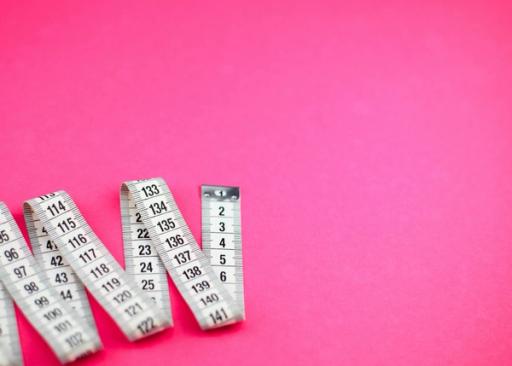
Keeping track of calories feels like an endless task sometimes. With your daily goals set, you might think you have a handle on it—until you discover there’s more to calories than what you eat. Many dieters struggle to understand which calories count when trying to achieve a deficit to lose weight. The good news is that the more you learn about the science of calories, the easier macro tracking becomes. This article will answer your questions about resting calories, illustrate how they contribute to a calorie deficit, and explain their role in weight loss. Understanding whether resting calories contribute to a calorie deficit can help you lose weight more efficiently without unnecessary effort. We will also touch upon "how to hit your macros?".
Cal AI’s calorie tracker can help you achieve your goals by providing a deeper understanding of the science of calories and how they work. This helpful tool can make tracking your calories more efficient and straightforward, helping you reach your weight loss goals faster.

A calorie deficit occurs when you burn more calories than you consume, leading to weight loss. When you create a calorie deficit, your body uses stored fat for energy, which leads to fat loss.
A calorie deficit is one part of the energy balance equation. The energy balance equation describes the relationship between the calories consumed through food and beverages and the calories expended, or burned, each day. You are in a calorie surplus when you consume more calories than you burn. Over time, this can lead to weight gain.
A healthy calorie deficit is typically around 300–500 calories. This will promote a sustainable weight loss of about 0.5 kilograms (kg) (1.1 pounds) per week. Of course, everyone is different, so you may need to adjust your calorie deficit based on your unique needs and goals.
Maintaining proper nutrition and avoiding extreme deficits is essential when pursuing a calorie deficit. Not only can they make you feel terrible, but they can also lead to muscle loss, fatigue, metabolic slowdown, and other adverse side effects.
Calories are the units of energy you get from foods and beverages. Calorie expenditure refers to the amount you expend or burn each day. It includes three components:
It’s also important to remember that other factors may influence weight fluctuations, such as:
To calculate your calorie deficit, you must first calculate your maintenance calories. These are the number of calories your body needs to support energy expenditure. You can calculate your maintenance calories in a few different ways:
Below are two formulas to estimate your BMR based on the sex assigned at birth:
Once you have your BMR, you can then calculate your maintenance calories using the Harris-Benedict Formula:
Activity Levels and BMR Multipliers:
For a more precise number, track your calorie intake and weight for 10 days while maintaining the same daily activity level. You can use a calorie-tracking app to track your calories and weigh yourself daily. For an accurate result:
It’s normal for your weight to fluctuate daily by a few pounds due to water weight. Divide the calories you consumed for 10 days 10 to find your average daily calorie intake. Then subtract 500 calories from this number to determine your new daily weight-loss intake goal. For example, if your maintenance calories are 2,000 per day, your new daily calorie goal would be 1,500. As you lose weight, your maintenance calories will decrease over time. You’ll need to adjust your calorie intake based on your weight loss goals.
It’s also important to note that a prolonged calorie deficit may affect your metabolism. It may change and slow down to meet your new calorie intake. This can make weight loss more difficult in the end.
You can create a calorie deficit by consuming fewer calories, increasing your physical activity levels, or both.
Creating a calorie deficit alongside being physically active may be a more sustainable, safe, and effective weight loss method. Eating a well-balanced diet is essential to achieving and maintaining a healthy calorie deficit.
The Dietary Guidelines for Americans 2020–2025 suggest that a healthy dietary pattern supports your calorie needs and reduces your risk of some health conditions, such as cardiovascular disease and type 2 diabetes. A well-balanced, nutritious diet may include:
Here are some tips that may also help you lower your caloric intake without having to count calories:
Weight loss is just one of the many benefits of regular physical activity. The Physical Activity Guidelines for Americans recommend that adults do 150–300 minutes of moderate-intensity exercise weekly or 75–150 minutes of vigorous-intensity exercise. Moderate-intensity exercise may include brisk walking, light bicycling, and yoga, while vigorous-intensity exercise may include jogging and fast bicycling.
The guidelines also recommend that adults do muscle-strengthening activities involving their major muscle groups, including the back, shoulders, chest, arms, and legs at least two days every week. These activities can help the body prioritize the loss of body fat rather than muscle mass.

Resting calories, or resting metabolic rate, refers to the calories the body needs to function while at rest. It’s the energy burned while sleeping, sitting, or lying down. Primary functions include breathing, blood circulation, food digestion, heartbeat, and neurological functions. The human body needs the energy to perform blood circulation or breathing functions.
Your body converts the food you eat into units of energy (calories) through a process called metabolism. The energy is used by the body immediately or stored for later use. The rate at which this process occurs is called metabolic rate.
There are three levels of calories: active, resting, and total calories. Active calories are those the body burns during physical exercises such as:
Active calories are essential for losing weight. Total calories are the sum of resting and active calories. The total number of calories you burn each day is your total daily energy expenditure (TDEE). The resting metabolic rate accounts for over 60% of total energy expenditure.
The term resting metabolic rate is often used interchangeably with basal metabolic rate. Nevertheless, the two terms mean two slightly different things. Basal metabolic rate refers to the minimum number of calories you need to exist and perform essential functions.
RMR is the number of calories your body burns when at rest, which includes low-effort activities such as eating and going to the bathroom.
The two are similar enough to be used interchangeably when estimating your daily energy needs. For most people, RMR can be estimated using known variables, including:
These variables can be entered into an RMR calculator to calculate approximately how many calories your body needs daily to function.
Every person’s resting metabolism is different and depends on several factors. The most significant factors that affect RMR include:
Many online RMR calculators can be used to calculate your resting metabolism. They then multiply by an activity factor to account for your physical activity and tell you approximately how many calories your body needs. You can also calculate resting calories in a lab, a gym, or by doing the math yourself.
Remember that these calculators and tests estimate the resting calories burned daily and don’t provide an exact figure. After calculating your resting metabolic rate, you might wonder if it falls within the normal range. The average RMR is estimated at approximately 1,400 kcal per day for females and 1,600 kcal per day for males. It is considered normal if your RMR falls above or below these values.
The RMR calculator is the simplest, most convenient way to calculate your resting calories. Search online for a Resting Metabolic Rate Calculator. Then, input your age, sex, height, and weight. You need to know these before you use an online resting calories burned calculator. Some also ask how active you are physically to give a more accurate estimate of your total energy needs.
Some clinics and health clubs may conduct tests to provide you with your RMR. Such a test takes approximately an hour. It may involve exercise testing. Most protocols require you to wear a mask for a certain period (approximately 15 minutes) while resting. This mask measures the exchange of gases to determine the number of resting calories burned.
If you do exercise testing, you must wear a mask while on a treadmill. This measures the number of calories your body burns while working. Calculate RMR Yourself If you’re a math lover, you can calculate RMR yourself. The Harris-Benedict Equation is used to estimate the resting metabolic rate.
You may see different versions of the equation out there, depending on if they are using the original or one of the revised versions.
Revised Harris-Benedict Equation:
For example, the RMR of a 25-year-old male who weighs 70 kg and is 170 cm tall needs approximately 1,700 Kcal per day at rest.
Weight gain results from consuming extra calories (more calories than the body requires). The average female needs 2,200 kcal, while the average male requires 2,700 kcal daily to function correctly and maintain weight. Any extra calories are stored as fat and may eventually cause weight gain.
If one individual reduces calorie intake and another increases physical exercise and doesn’t cut back on calories, the first individual will probably find it easier to lose weight. Burning 500 calories is more challenging than cutting 500 calories from daily meals. Nevertheless, if you only cut back on calories, it’s more likely that you’ll regain the weight lost.
Why is this? The human body reacts to weight loss as if undergoing starvation; consequently, body metabolism decreases. Even when you’re resting, your body burns fewer calories. When the body burns fewer calories, you either lose weight slower or don’t lose weight at all.
When you increase your calorie consumption, you may gain weight more quickly than you previously did.
The solution is to balance modest calorie restriction and increase physical activity to maintain your metabolic rate as much as possible. Regular exercise increases the calories burned and the energy expenditure during rest. It also temporarily increases your appetite.
People often joke about wanting a snack after exercise. As exercising regularly raises your resting metabolic rate, people continue burning energy at higher rates. Therefore, a snack after a workout doesn’t erase the effort of exercising regularly to help people keep their weight in check. Try eating slightly less than your total calorie needs to lose weight.
You can also increase your level of physical activity to create an energy deficit. Some experts call this a calorie deficit. When you take in fewer calories than your body needs, it burns up stored fat as fuel. The result is that you lose weight. Nevertheless, restricting calories too much can backfire, so you should aim for a 500-calorie daily deficit (or difference between what you burn and what you take in through eating).

Cal AI transforms calorie tracking with cutting-edge AI technology. Just snap a photo of your meal, and we'll do the rest.
Our app combines your phone's depth sensor with advanced AI models to:
With 90% accuracy on visible foods and multiple tracking options like:
We've made nutrition tracking effortless. Whether you're scanning a full meal or a quick snack, Cal AI
Our AI learns from your feedback to improve accuracy. It includes personalized insights and smart reminders to keep you on track. Cal AI makes achieving your fitness goals simpler than ever.
Track your calories with your camera using Cal AI's calorie tracker today!